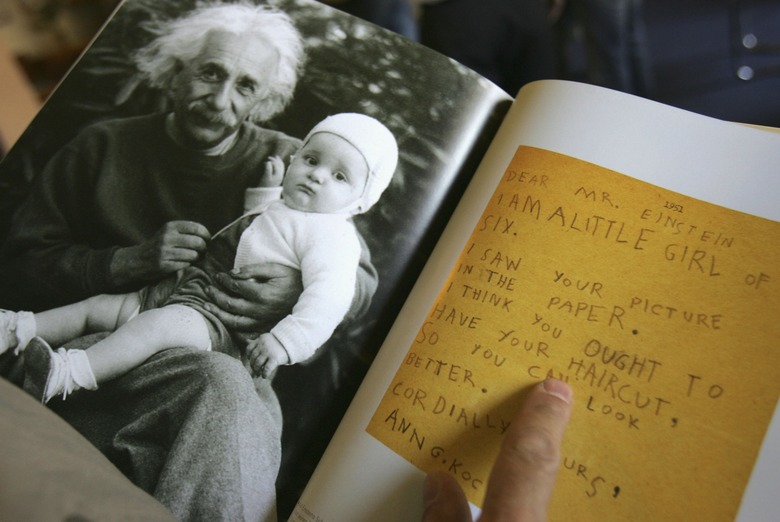What Does E=MC Squared Stand For?
E=mc squared is the most famous formula in physics. It is often referred to as the Theory of Mass Energy Equivalence. Most people know that Albert Einstein developed it, but few have any idea what it means. Essentially, Einstein came up with a relationship between matter and energy. His genius was realizing that matter can be turned into energy and energy into matter.
Identification
Identification
The "E" in the formula stands for energy, measured in units called ergs. The "m" represents mass in grams. The "c" is the speed of light measured in centimeters per second. When the speed of light is multiplied by itself (squared) then multiplied by the mass, the result is a very large number. It shows that the energy stored in even a small amount of mass is enormous.
Fusion
Fusion
One way for the energy in mass to be released is for the atoms that make up that mass to fuse together. This happens sometimes in nature. For example, within a star, two atoms of hydrogen can be propelled together at such great speed that the single protons in their nuclei fuse together to form a helium atom with two protons. The process turns about 7 percent of the original mass into energy. This can be calculated with the formula E=mc squared. The process is called nuclear fusion. We see it in man-made devices like particle accelerators and nuclear bombs.
Fission
Fission
Another way for the energy in mass to be released is for atoms within that mass to come apart. This also occurs naturally in nature. For example, uranium is radioactive element. That means it is falling apart. There are 92 protons in its nucleus. All of them are positively charged and trying to get away from each other. This is similar to two magnets with the same polarity repelling each other. When uranium atoms lose protons they become other elements. When you add up the weight of the new nucleus with that of the ejected protons, the result is slightly lighter than the original uranium atom. The lost mass is turned into energy. This is why radioactive elements release heat and light. This is called nuclear fission. The energy created can also be calculated with the formula E=mc squared.
Matter and Antimatter
Matter and Antimatter
The protons and electrons that make up the universe are have "mirror image" cousins called antiprotons and positrons; these particles have the same mass but opposite electric charge. Interestingly, when a normal particle collides with its antimatter twin, they wipe each other out, turning all their mass into energy. Because of E = mc squared, the energy release is enormous. Fortunately, our universe has very little antimatter, making these collisions rare.
History
History
Einstein's theory revolutionized the way human beings viewed the universe. It joined the notions of mass and energy, which were previously thought to be completely separate. Einstein showed that mass can be turned into energy and energy can become mass. We now understand more about why the stars shine, the nature of black holes and the creation of the universe thanks to E=mc squared. The dark side of the formula is its use in the development of nuclear weapons. In fact, it was Einstein himself who urged the development of the first atomic bomb before America's wartime enemies could.
References
Cite This Article
MLA
Ninomiya, Kent. "What Does E=MC Squared Stand For?" sciencing.com, https://www.sciencing.com/about-4570573-what-does-emc-squared-stand/. 7 August 2017.
APA
Ninomiya, Kent. (2017, August 7). What Does E=MC Squared Stand For?. sciencing.com. Retrieved from https://www.sciencing.com/about-4570573-what-does-emc-squared-stand/
Chicago
Ninomiya, Kent. What Does E=MC Squared Stand For? last modified March 24, 2022. https://www.sciencing.com/about-4570573-what-does-emc-squared-stand/
